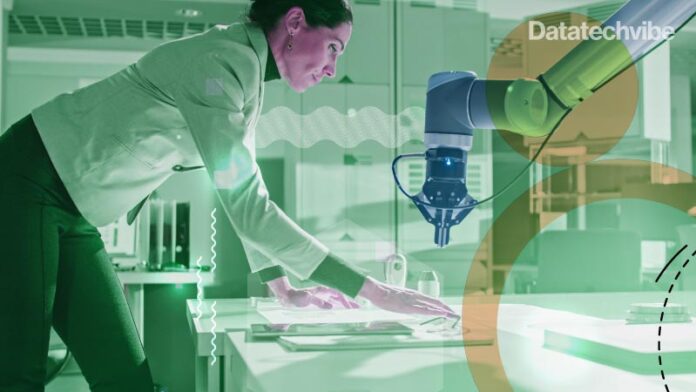In his bestselling book Homo Deus, Yuval Noah Harari points out why the future of work may differ drastically.
Since the Industrial Revolution, he writes, “As old professions became obsolete, new professions evolved, and there was always something humans could do better than machines.” People in developed countries went from fields to industrial jobs. “Yet this is not a law of nature,” he points out, “and nothing guarantees it will continue to be like that in the future.”
While many jobs in service industries are automated away and a new way of work unfolds, humans remain central to what they do. No doubt, robots are more intelligent than ever, learning to respond to their environment and perform tasks without human intervention. In certain industries, the future of work will involve humans working seamlessly with robot colleagues. Enter cobots, or collaborative robots, to work alongside or sometimes replace humans on the line.
Cobots are used in face-to-face collaboration with humans to achieve various tasks. They are the hardware version of augmented intelligence. Instead of replacing humans, cobots augment and enhance human capabilities with strength, precision, and data capabilities.
In March, Tutor Intelligence demonstrated a cobot that picked and placed different sized and shaped materials in a kitting assembly application.
Using vision software, the cobot learns complex environments, packing by seeing and understanding what’s around it. It can handle irregular items, including produce and textiles, and arrange them in bags, boxes, or trays. Part of the appeal of this cobot is that it is available in pay-by-the-hour leasing plans.
Robots operate daily in manufacturing, warehouse, and healthcare to perform the tasks humans would otherwise perform, with not always positive outcomes. However, industrial robots often must be separated from physical human contact to prevent accidental human contact and to inflict harm.
Now, as companies are increasingly looking to automate greater portions of their business, the interaction of robots and people is needed. And cobots are meant to operate in conjunction with, and in close proximity, to humans to perform their tasks. Unlike robots, cobots are intentionally built to interact with humans in a shared workspace physically. Here humans control the robot’s power while gaining all the advantages in assistive capabilities that the machine would provide.
Easier to program, more affordable
Cobots are simpler to program. They are trained differently than traditional industrial robots. Robots are trained by humans manipulating the arms and training by example rather than programmed. This video does a great job showing this.
The technology is based on a hybrid human/artificial intelligence engine that enables easy and quick deployment for easy configuration and changeover. The human-in-the-loop AI lets cobots learn new tasks in new environments without custom programming.
Furthermore, cobots are affordable, less complex, and easy to use for training purposes, and this will offer multiple options to organisations, increasing and driving the demand.
The reduced cost, high returns on the investment, and improved quality of products are the major factors for the growth of the cobot market, which is expected to grow at a CAGR of 42.80 per cent from 2022 to 2028
Application of cobots
Cobots are slowly increasing their footprint in industrial settings, both large and small. Amazon has been a pioneer in factory automation with which we have all been familiar for years: robot arms picking and prodding at assembly lines, while humans see to the tasks that require a bit more thought. Some application areas of cobots include eCommerce fulfilment packing, food packing, and feeding conveyors.
There is a range of automation and intelligence tasks that previously couldn’t be addressed by robots but can now be intelligently automated with cobots. If automotive and industrial solutions can find uses for cobots, manufacturing, logistics, supply chain, warehouse, and perhaps even retail and consumer industries can find a range of cobot use cases.
The versatility of cobots, which can be customised with different top modules to meet customer needs, is a key reason why industries choose to have them. Perhaps it won’t be long when we have cobots staffing agencies, and Starbucks baristas will be cobots. This is a possibility that Harari warns about in Homo Deus as well.
If you liked reading this, you might like our other stories
The Rise In Automation In The Middle East
Designing Marketing Automation Campaigns for Better ROI









